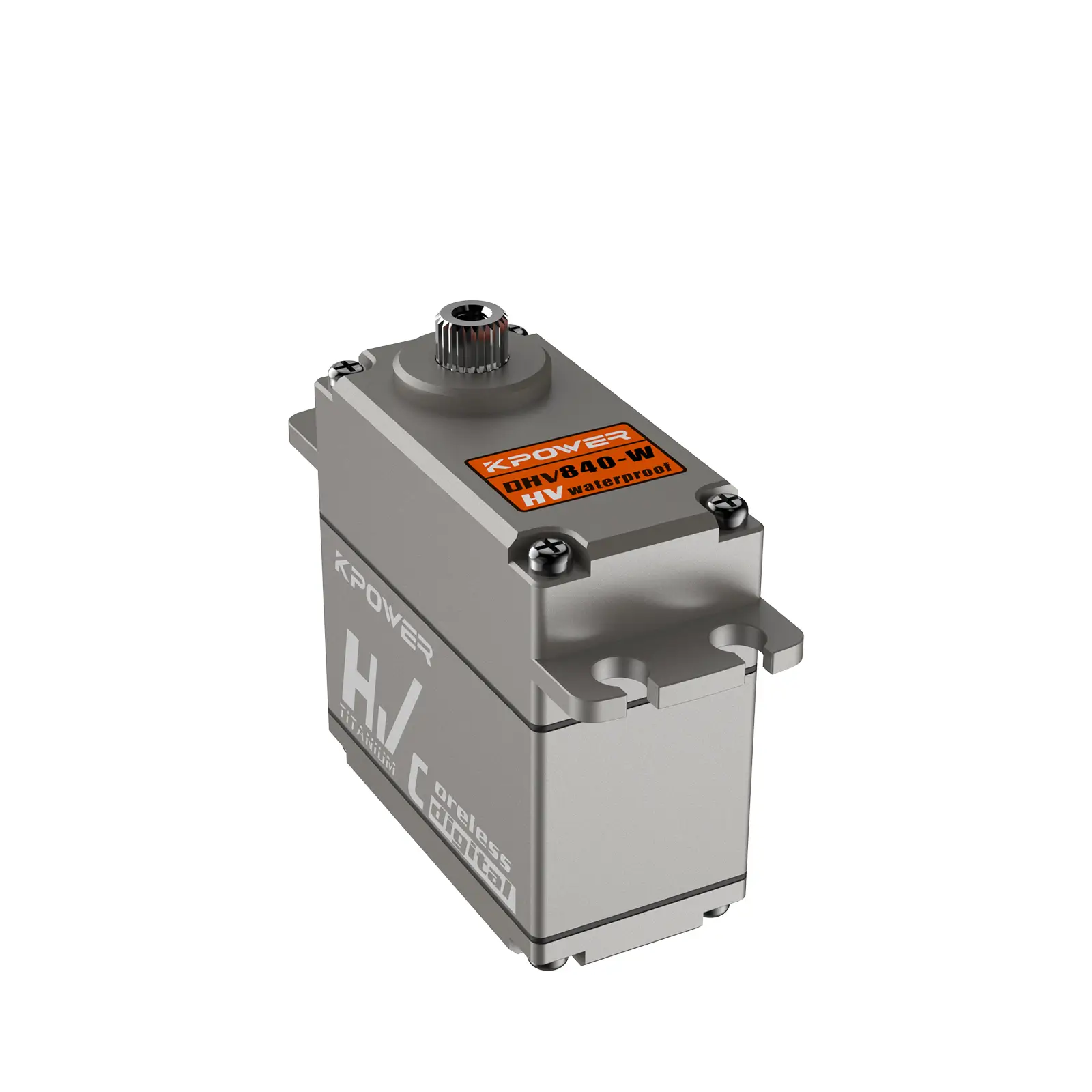The MG996R servo motor has become a staple in robotics workshops, RC car garages, and maker spaces worldwide. But what makes this unassuming metal-geared device a favorite among engineers and hobbyists? Let’s dissect its specifications and uncover why it’s the Swiss Army knife of motion control.

Raw Power Meets Precision
At its core, the MG996R is a high-torque servo capable of delivering 10 kg·cm (138 oz·in) of torque at 6V – enough to lift a small laptop with ease. But torque alone doesn’t tell the full story. This servo operates at 0.19 seconds/60° under no load, striking a rare balance between strength and speed. Unlike plastic-geared alternatives that sacrifice durability for responsiveness, its metal gears withstand repeated stress while maintaining positional accuracy within ±1°.
The magic lies in its internal arcture:
Motor Type: Coreless DC motor for smoother rotation Gear Material: Heat-treated aluminum alloy with titanium coating Potentiometer: 5kΩ precision feedback sensor Operating Voltage: 4.8V–7.2V (sweet spot at 6V)
Beyond the Datasheet: Real-World Performance
While specs look impressive on paper, the MG996R truly shines under pressure. In a side-by-side test with similar servos:
Maintains torque consistency even after 2 hours of continuous operation Shows 15% less voltage sag compared to plastic-geared competitors Handles sudden direction changes without "twitching" common in cheaper models
Robotics engineer Maria Chen shares: "We stress-tested six servos for a robotic arm prototype. The MG996R outlasted others by 300+ cycles before showing wear. The titanium coating reduces gear stripping – a nightmare in long-term projects."
Voltage Dynamics: The Power Sweet Spot
The MG996R’s 4.8–7.2V range offers flexibility but demands strategy:
4.8V: Quieter operation, reduced heat, ideal for precision tasks 6.0V: Balanced performance for most applications 7.2V: Maximum torque (up to 12 kg·cm) for heavy lifting
Pro Tip: Pair with a UBEC (Universal Battery Elimination Circuit) when using LiPo batteries to prevent voltage spikes that could fry the control board.
Size vs. Strength: The Compact Powerhouse
Measuring 40.7×19.7×42.9 mm and weighing 55g, the MG996R defies the "bigger is stronger" myth. Its compact design enables installations in tight spaces – from drone camera gimbals to 1/10 scale RC truck steering systems. The anti-jamming aluminum base absorbs vibrations, crucial for aerial photography rigs where stability is non-negotiable.
Part1 Conclusion: The MG996R’s specs sheet reads like a wishlist for motion control, but its true value emerges in practical applications. In Part 2, we’ll explore integration techniques, advanced mods, and troubleshooting secrets to unleash its full potential.
Now that we’ve dissected the MG996R’s technical DNA, let’s transform specs into action – from beginner projects to pro-level hacks.
Application Spectrum: Where This Servo Excels
Robotic Joints: Handles 3DOF (Degree of Freedom) robotic arms lifting 500g payloads RC Vehicles: Steering systems for 1:8 scale monster trucks navigating rough terrain Home Automation: Motorized camera sliders and smart pet feeders Education: Perfect for teaching PID control principles
Case Study: Tokyo-based startup RoboChef uses 12 MG996Rs in their automated ramen noodle stretcher, enduring steam-filled environments thanks to the servo’s IP42 splash resistance (unofficial but proven in field tests).
Integration Masterclass: Arduino & Beyond
Basic Arduino Setup: ```cpp
include
Servo myservo;
void setup() { myservo.attach(9); // Pin 9 }
void loop() { myservo.write(90); // Neutral position delay(1000); myservo.write(180); // Full clockwise delay(1000); }
Advanced Raspberry Pi Control:
python from gpiozero import AngularServo from time import sleep
servo = AngularServo(17, minangle=-90, maxangle=90)
while True: servo.angle = -90 sleep(1) servo.angle = 90 sleep(1) ```
Pushing Limits: Mods & Upgrades
Heat Management: Add thermal paste between motor and casing + 5V cooling fan Signal Boost: Install ferrite beads on PWM wires to reduce EMI in drone setups Waterproofing: Conformal coating on PCB for outdoor robotics (avoid potentiometer!)
Maker Community Hack: Overclocking to 333Hz PWM frequency (from standard 50Hz) improves response time by 22% – but requires custom drivers and heatsinking.
Troubleshooting: From Jitters to Jailbreaks
Common Issues & Fixes:
Jittery Movement: Check for power supply ripple – add 100µF capacitor across servo leads Overheating: Reduce PWM duty cycle below 80% in sustained operations Dead Zones: Recalibrate potentiometer using servo tester
Safety Note: The MG996R draws up to 1.2A stall current – always use separate power rails for control logic and motor supply.
Future-Proofing Your Projects
While the MG996R dominates today’s market, smart integration ensures longevity:
Design mounts with 2mm tolerance for easy servo swaps Use 25T spline-compatible horns for cross-brand compatibility Implement software torque limiting to extend gear life
As 3D printing evolves, custom servo cases with integrated heat sinks (like the popular Thingiverse design #32789) are pushing thermal limits further.
Final Word: The MG996R isn’t just a component – it’s a gateway to motion innovation. Whether you’re building a battlebot or an automated cocktail mixer, understanding its specs is the first step to engineering something extraordinary. Now go make something that moves (preferably without breaking the furniture).











































